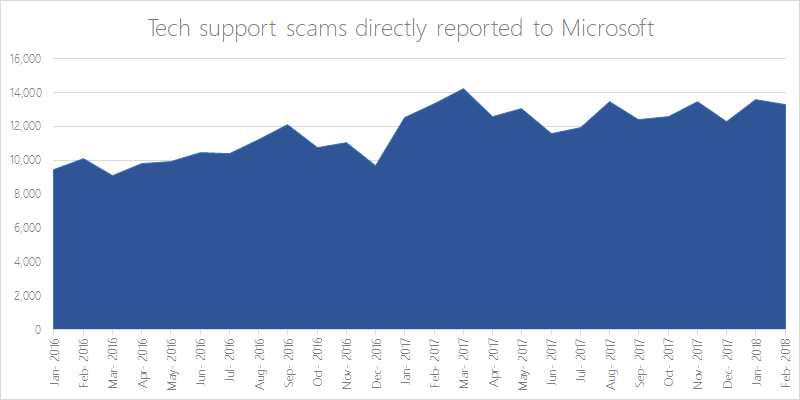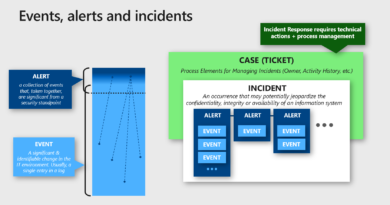Beyond the buzzwords

When I was a kid, Gilligan’s Island reruns aired endlessly on TV. The character of the Professor was supposed to sound smart, so he’d use complex words to describe simple concepts. Instead of saying, “I’m nearsighted” he’d say, “My eyes are ametropic and completely refractable.” Sure, it was funny, but it didn’t help people understand his meaning.
Security vendors and professionals suffer from a pinch of “Professor-ism” and often use complex words and terminology to describe simple concepts. Here are few guidelines to consider when naming or describing your products, services, and features:
Assess whether a new term or acronym is needed
Before trying to create a new term or acronym, assess whether an existing one will work. Consider the mobile device space where tools used to manage mobile devices were originally known as MDM for mobile device management. Pretty straightforward. But then the acronym flood started with MAM (mobile application management), MIM (mobile information management), and EMM (enterprise mobile management). It’s true, there are some technical differences between the four, but a quick Bing search shows a raft of articles explaining the differences because it’s not clear to the average customer. And, frankly, all of them are basically subsets of the MDM acronym.
Use acronyms with enthusiasm and clarity
When creating a new term or acronym there is no point in being memorable if the meaning gets lost in the noise. Instead of succumbing to the path of least resistance by forming an acronym, put a little oomph into your naming efforts.
A recent example is SOAR (Security Orchestration, Automation, and Response). Yes, it was a whole new category and one that is adjacent to SIEM (security information and event monitoring) but it adds clarity because it describes a new set of features and functions—like incident response activities and playbooks—which aren’t covered by traditional SIEMs.
Acronyms can save time, but when you get into splintered variants like the MDM example, clarity goes out the window. Since not all acronyms are created equal, go for acronym gold—and make sure there is a recognizable connection to your brand or (even better) the product itself.
This strategy can yield explosive results! Think TNT (Trinitrotoluene), or the more chill TCBY® (The Country’s Best Yogurt), or the zip in ZIP code (Zone Improvement Plan). Compare these zingers with an acronym for something like UDM (Unified Data Management). Sorry—is that the sound of you snoring? (Me, too!)
Put a little pep in your step (and your sales) by producing names that are sharply focused—like laser (Light Amplification by Stimulated Emission of Radiation)—which is an acronym that has become synonymous with what it does and has some well-placed vowels. Another winner in this category is GIF (graphics interchange format). While this acronym wasn’t recognizable out the door, it became synonymous with the product it created by adding a bit of pizzazz to the mix.
Use names that are clear and practical—but catch and hold the imagination
Resist the temptation to take a cool buzzword and tack it onto your marketing efforts to take advantage of the attention. I once saw a basic power strip advertised as “internet ready.” Come on now! Find words or phrases that catch and hold the imagination—while saying something about your product’s functionality.
Sometimes it’s as simple as helping customers understand what the product does: antimalware? Customers are going to get that this probably protects against malware. If the solution really is a new approach, make the name as clear as possible.
In addition, rather than inventing new terms, consider being very practical. Think of the use-cases and ask these questions: What does the solution do for the customer or business? What does the solution deliver? Or what kind of brand experience does your product provide?
Years ago, I ran afoul of a company that advertised itself as “S-OX in a Box” (that’s Sarbanes-Oxley, not a sports or footwear reference), because I wrote a piece on the complexity of the tech side of S-OX compliance. I explained why it wasn’t as simple as buying a “S-OX in a BOX” solution. I wasn’t trying to call out that specific company, but rather to show why it can be better to be clear and explicit about what a solution does. S-OX is too complex for a single solution to do it all. But a tool that can help automate S-OX compliance reporting? That, for many companies, is a big win.
Also, think about the non-cyber world—where companies describe the function to discover an evocative name. Examples of everyday products that accomplish this include bubble wrap, Chapstick®, Crock-Pot®, and Onesie®. Not all first tries will be winners. For example, the breathalyzer was originally known as the Drunk-O-Meter. Just experiment with it. Have some fun. Make it meaningful to your client or customer.
Never overpromise
Promising customers that they will never have a breach again is a pretty lofty claim. And most likely impossible. Words like absolute, perfect, and unhackable may sound good in copy, but can you guarantee a product or solution really deliver absolute security?
Savvy customers know that security is about risk management and tradeoffs and that no solution is completely immune to all attacks. Rather than overpromise, consider helping the customer understand what the solution does. Does the product protect against a breach by monitoring the database? Good, then say that.
Get creative and mix it up
Get creative by mixing initials and non-initial letters, as in “radar” (RAdio Detection And Ranging). Or try “initialism,” which requires you pronounce your abbreviation as a string of separate letters. Examples include OEM (original equipment manufacturing) and the BBC (British Broadcasting Corporation). You can also incorporate a shortcut into the name by combining numbers and letters like 3M (Minnesota Mining and Manufacturing Company).
If you’re really stuck, try a backronym
A backronym is created when you turn a word into an acronym by assigning each letter a word of its own—after a term is already in use. For example, the term “rap” (as in rap music) is a backronym for rhythm and poetry and SOAR is a backronym for Security Orchestration, Automation, and Response.
If you want something closer to the technology realm, check out what NASA (a well-known acronym for National Aeronautics and Space Administration) did. They named a space station treadmill in honor of comedian Stephen Colbert by coming up with the words to spell out his name: Combined Operational Load-Bearing External Resistance Treadmill (COLBERT).
Find your sweet spot
When it comes to using common words to describe uncommon things, combine the freshness and friendliness of Mary Ann and with the profit mindset of Thurston Howell III to come up with names that intrigue people with their relatability and nail the sale because clients and customers get a clear idea of the product’s business value.
Reach out to me on LinkedIn or Twitter and let me know what you’d like to see us cover as we talk about new security products and capabilities.
READ MORE HERE



